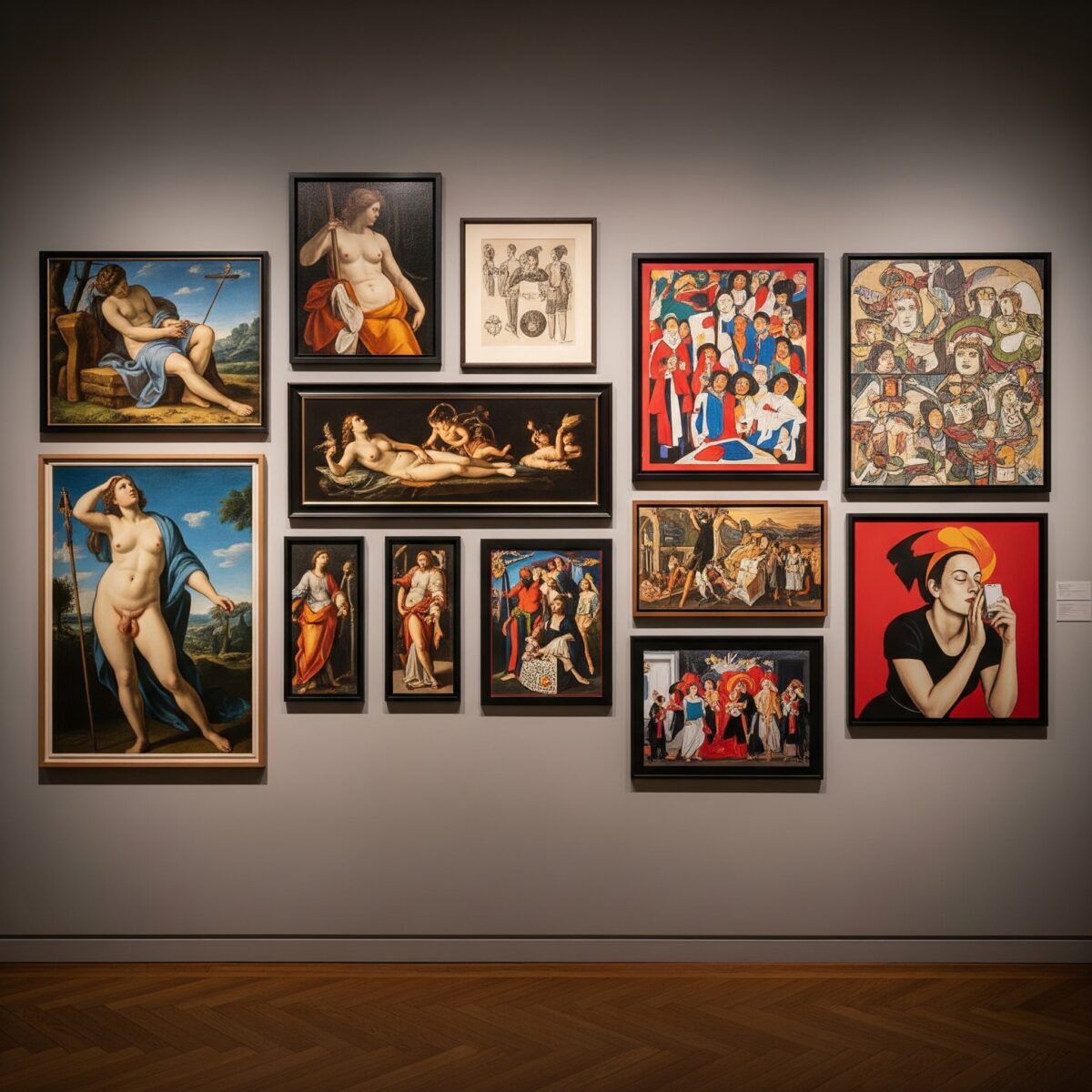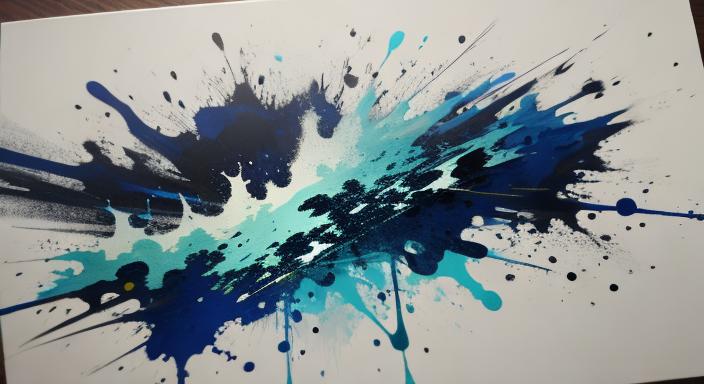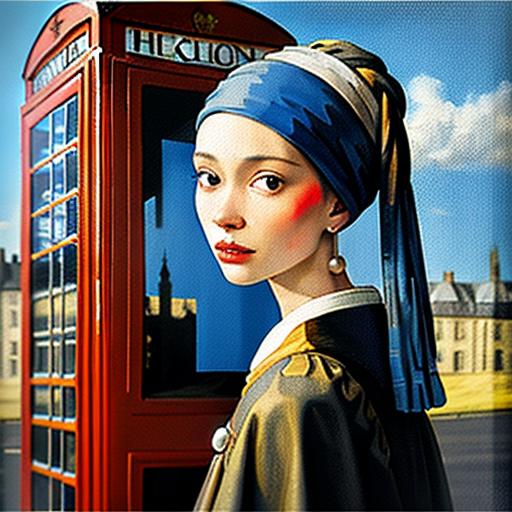Throughout history, controversial art pieces have sparked heated debates, divided public opinion, and challenged society’s deepest beliefs. From religious imagery that offended churchgoers to political statements that angered governments, these artworks prove that art has always been more than just pretty pictures on walls. When artists dare to push boundaries, they create works that become lightning rods for cultural discussion, forcing us to examine our values and question what we believe.
Key Points Summary
- Controversial art has existed throughout history, challenging social norms and sparking debate
- Religious themes, political messages, nudity, and cultural criticism are common sources of controversy
- Government funding debates and censorship battles have shaped artistic freedom
- Modern digital platforms amplify both support and criticism of provocative artworks
- These pieces often become more valuable and historically significant due to their controversy
Art becomes controversial when it challenges what society considers acceptable. Whether it’s a painting that questions religious beliefs, a sculpture that critiques political power, or an installation that explores taboo subjects, these works force uncomfortable conversations. The tension between artistic expression and public sensibilities has created some of the most memorable moments in art history.
What Makes Art Controversial?
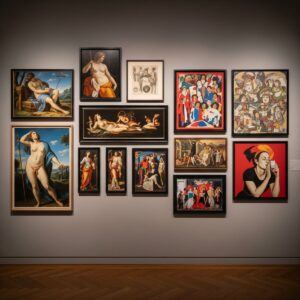
Understanding controversial art requires looking at the cultural context surrounding each piece. Art doesn’t exist in a vacuum – it reflects and responds to the times in which it was created. Several factors consistently spark public outrage and debate:
Religious Content often triggers the strongest reactions. When artists incorporate sacred symbols, challenge religious authority, or present alternative interpretations of spiritual themes, they risk offending believers who view such works as blasphemous.
Political Statements in art can anger both governments and citizens. Artists who critique war, challenge authority, or advocate for social change often find their work banned, censored, or attacked by those in power.
Nudity and Sexuality have been sources of controversy since ancient times. What one culture considers natural artistic expression, another may view as obscene or inappropriate for public display.
Historical Evolution of Art Controversy
The definition of controversial art has evolved dramatically over centuries. What shocked Victorian audiences might seem tame today, while modern installations can still provoke outrage in contemporary viewers.
In the 1800s, paintings showing everyday people instead of mythological figures caused scandals. The Paris Salon, France’s official art exhibition, regularly rejected works that didn’t meet their strict standards. Artists like Édouard Manet found themselves at the center of cultural storms for daring to paint modern life honestly.
The 20th century brought new forms of artistic expression and new controversies. Performance art, conceptual installations, and avant-garde movements pushed boundaries in ways traditional painting never could. Government funding became a battleground, with organizations like the National Endowment for the Arts facing criticism for supporting provocative works.
“Art should comfort the disturbed and disturb the comfortable.”
This famous quote captures why controversial pieces remain essential to cultural dialogue.
Controversial Art Through Time
Challenging Conventions from 1860 to 2025








Top 10 Most Controversial Art Pieces in History
1. Piss Christ by Andres Serrano (1987)
This photograph showing a crucifix submerged in the artist’s urine became one of the most debated artworks in American history. The piece sparked massive protests and congressional hearings about government arts funding. Critics called it blasphemous, while supporters defended it as commentary on the commercialization of Christianity.
The controversy reached the highest levels of government, with senators demanding the NEA stop funding such works. Despite the outrage, many art critics praised Serrano’s technical skill and conceptual depth.
2. Olympia by Édouard Manet (1863)

When Manet painted a nude woman staring directly at viewers with confidence and defiance, Victorian society was scandalized. Unlike classical nudes who looked modestly away, Olympia’s bold gaze suggested she was a prostitute – a shocking subject for “serious” art.
The painting caused riots at the Paris Salon. Guards had to protect it from angry visitors who tried to attack it with umbrellas and walking sticks. Today, art historians recognize Olympia as a masterpiece that changed how artists depicted women.
3. Tilted Arc by Richard Serra (1981)
This massive steel sculpture bisected a public plaza in New York City, creating a 120-foot barrier that people had to walk around. Office workers complained it made their daily commute difficult and transformed their lunch space into an obstacle course.
The debate highlighted tensions between artistic vision and public utility. After years of hearings and protests, the government removed the sculpture in 1989, raising questions about public art and community input.
4. The Physical Impossibility of Death in the Mind of Someone Living by Damien Hirst (1991)
Hirst’s shark preserved in formaldehyde became a symbol of contemporary art’s relationship with death and commerce. The 14-foot tiger shark, suspended in a tank, cost millions to create and maintain.
Critics questioned whether preserving a dead animal constituted art or mere spectacle. The piece sparked debates about the boundaries of artistic expression and the art market’s obsession with shock value.
5. Guerrilla Girls Posters
This anonymous feminist collective created provocative posters highlighting gender inequality in museums and galleries. Their works asked uncomfortable questions like “Do women have to be naked to get into the Met Museum?”
The Guerrilla Girls’ data-driven activism exposed discrimination in the art world, making their anonymous protests impossible to ignore. Their work continues influencing discussions about representation and equality in cultural institutions.
6. Robert Mapplethorpe’s Photography
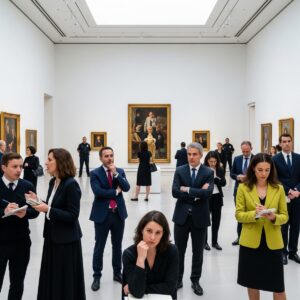
Mapplethorpe’s photographs exploring sexuality, particularly his images of gay relationships and BDSM culture, became the center of national debates about art, morality, and public funding in the late 1980s.
The Brooklyn Museum’s exhibition of his work led to congressional hearings and policy changes affecting arts funding. The controversy highlighted tensions between artistic freedom and community standards.
7. Girl with Balloon by Banksy
While Banksy’s street art generally receives positive reception, this piece became controversial when it partially shredded itself immediately after selling at auction for over $1 million. The stunt questioned the commercial art market and the value we place on artistic objects.
The incident sparked global discussions about authenticity, market manipulation, and whether the artist had pulled off the greatest art prank in history.
8. Venus of Urbino by Titian (1538)

Even Renaissance masterpieces weren’t immune to controversy. Titian’s reclining nude was considered scandalous for its time because the woman appeared to be a real person rather than a mythological goddess.
The painting’s realistic portrayal of female sexuality challenged religious and social conventions of 16th-century Italy, establishing precedents for how artists could depict the human body.
9. Dirty Corner by Anish Kapoor (2015)
Kapoor’s large-scale installation at the Palace of Versailles was vandalized multiple times with anti-Semitic graffiti. The sculptor’s decision to preserve the graffiti as part of the work created additional controversy about art, vandalism, and historical memory.
The piece highlighted ongoing tensions about contemporary art in historical settings and society’s struggle with hate speech and artistic response.
10. For the Love of God by Damien Hirst (2007)
This platinum skull covered with 8,601 diamonds raised questions about wealth inequality, death, and art as luxury commodity. Critics argued it represented everything wrong with contemporary art’s obsession with expensive materials and shock value.
The piece’s £50 million price tag sparked discussions about art market speculation and whether expensive materials automatically create valuable art.
The Role of Media in Art Scandals
Modern media plays a crucial role in amplifying art controversies. Social media platforms can turn local gallery exhibitions into global debates within hours. Artists now must consider how their work will be interpreted not just by museum visitors, but by millions of online viewers who may never see the piece in person.
The speed of digital communication means controversies develop faster and reach wider audiences than ever before. A single Instagram post can generate more discussion than traditional art criticism once did.
Impact on Artistic Freedom
These controversies have shaped policies governing artistic expression worldwide. Court cases involving controversial artworks have established important legal precedents about First Amendment rights and the boundaries of acceptable public art.

Museums and galleries now carefully consider potential backlash when planning exhibitions. Some institutions have developed policies for handling controversial works, while others actively seek provocative pieces to generate discussion and media attention.
The relationship between government funding and artistic content remains contentious. Organizations like the National Endowment for the Arts continue balancing support for artistic innovation with accountability to taxpayers who may object to certain works.
Contemporary Challenges in the Digital Age
Today’s controversial art pieces face unique challenges in our interconnected world. Digital platforms allow instant global distribution of images, but they also enable rapid mobilization of both supporters and critics.
Artists working with artificial intelligence, virtual reality, and digital media are creating new forms of controversy that previous generations couldn’t imagine. These technologies raise fresh questions about authorship, authenticity, and the nature of artistic creation itself.
Why Controversial Art Matters
Despite the heated debates they generate, controversial art pieces serve essential functions in society. They force us to examine our assumptions, challenge comfortable beliefs, and engage with difficult topics we might otherwise avoid. These works often predict social changes, highlighting issues that mainstream culture hasn’t yet recognized.
The art world’s willingness to embrace controversy demonstrates its commitment to pushing boundaries and exploring new territories of human experience. Without artists willing to risk criticism and censorship, art would lose much of its power to inspire, provoke, and transform.
Many of history’s most celebrated artworks were once considered scandalous. Time has a way of transforming shocking contemporary works into respected historical documents that help us understand past societies and their struggles.
The Economics of Art Controversy

Controversy often increases an artwork’s market value and historical significance. Pieces that generate public debate become more memorable and culturally important than works that pass unnoticed. Auction houses like Sotheby’s and Christie’s have noted that controversial provenance can drive prices higher.
Museums report increased attendance for exhibitions featuring controversial works, suggesting public fascination with art that challenges social norms. This economic reality influences how artists, galleries, and institutions approach provocative content.
Global Perspectives on Art Censorship
Different cultures have varying tolerance levels for controversial artistic expression. What’s acceptable in one country may be banned in another, creating complex challenges for international exhibitions and traveling shows.
Understanding these cultural differences helps us appreciate why certain artworks generate controversy in some contexts while being celebrated in others. The globalization of art markets has made these cross-cultural considerations increasingly important.
Frequently Asked Questions
What makes art controversial?
Art becomes controversial when it challenges established social norms, religious beliefs, political systems, or cultural values. Common triggers include religious imagery, political statements, sexuality, violence, and cultural criticism.
Should art be censored?
This remains a complex debate balancing artistic freedom against community standards. Most democratic societies protect artistic expression while allowing some restrictions for content that may harm specific groups or violate laws.
What are the most banned artworks?
Throughout history, artworks have been banned for various reasons including religious content (Piss Christ), political messages (Guerrilla Girls posters), and sexual themes (Mapplethorpe photography). Banned works often become more famous due to the censorship attempts.
How do politics influence art controversy?
Politics shape art controversy through government funding decisions, censorship policies, and cultural climate. Political tensions often amplify reactions to artworks that address social issues or challenge authority.
Which artists have caused the biggest scandals?
Artists like Andres Serrano, Damien Hirst, Robert Mapplethorpe, and Banksy have created works generating significant public controversy. Their willingness to challenge boundaries has made them both celebrated and criticized.
Why do museums display controversial art?
Museums display controversial works to promote cultural dialogue, preserve artistic freedom, provide educational value, and document historical moments. These institutions often view controversy as evidence of art’s continued relevance and power.
Understanding controversial art pieces helps us appreciate art’s role in society and its power to provoke meaningful discussions about values, beliefs, and cultural change. These works remind us that great art doesn’t just decorate walls – it challenges minds, opens hearts, and changes how we see the world around us.
For more insights into art history and cultural analysis, explore our guides on art symbolism and hidden meanings in famous paintings. Learn about the business side of controversial art in our art market trends analysis.

